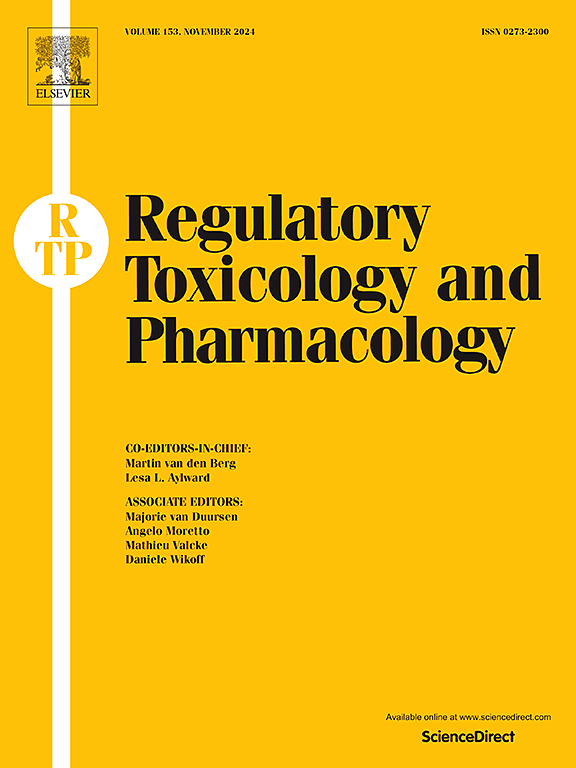结构化的、系统化的药物收益风险评估方法的价值:一个南非监管机构的案例研究。
IF 3.5
4区 医学
Q1 MEDICINE, LEGAL
引用次数: 0
摘要
本研究调查了南非保健品监管局(SAHPRA)内利益风险评估通用方法(UMBRA)框架的效用,以确定采用结构化方法是否能提高新化学实体(NCEs)利益风险评估的一致性、透明度和质量。UMBRA八步框架回顾性和前瞻性地应用于六个nce,系统地记录决策背景,识别利益和风险,并解释利益-风险平衡。比较了最初的SAHPRA叙述性评估和基于umbra的结构化评估。通过问卷调查和小组讨论收集审稿人的反馈。回顾性研究表明,UMBRA提供了更大的清晰度,并与全球参考当局的决策保持一致,提高了利益和风险加权的透明度。这项前瞻性研究证明了UMBRA在强调当地人口统计和临床考虑方面的效用,增强了监管决策的可靠性。UMBRA框架通过提供结构化、透明和可重复的方法,增强了收益-风险评估过程。它促进了与全球最佳实践相一致的综合决策,减少了对主观判断的依赖。在SAHPRA和其他非洲监管机构实施UMBRA可以促进统一的监管实践,提高公众信任,并使决策的沟通透明化。该研究建议将UMBRA整合到常规评估、新审核员培训计划和依赖策略中,以确保跨司法管辖区公平的利益-风险评估。本文章由计算机程序翻译,如有差异,请以英文原文为准。
The value of a structured, systematic approach to benefit-risk assessment of medicines: A South African regulator case study
This study investigates the utility of the Universal Methodology for Benefit-Risk Assessment (UMBRA) framework within the South African Health Products Regulatory Authority (SAHPRA) to determine whether adopting a structured approach improves consistency, transparency, and quality in benefit-risk assessments of new chemical entities (NCEs). The UMBRA eight-step framework was applied retrospectively and prospectively to six NCEs to systematically document the decision context, identify benefits and risks, and interpret the benefit-risk balance. Comparisons were made between initial SAHPRA narrative assessments and structured UMBRA-based evaluations. Reviewer feedback was collected through a questionnaire and group discussions. The retrospective study revealed that UMBRA provided greater clarity and alignment with decisions by global reference authorities, improving transparency in the weighting of benefits and risks. The prospective study demonstrated UMBRA's utility in highlighting local demographic and clinical considerations, enhancing regulatory reliance decisions. The UMBRA framework enhances the benefit-risk assessment process by providing a structured, transparent, and reproducible methodology. It facilitates comprehensive decision-making that aligns with global best practices, reducing reliance on subjective judgements. Implementing UMBRA at SAHPRA and other African regulatory authorities could promote harmonised regulatory practices, improve public trust, and enable transparent communication of decisions. The study recommends integrating UMBRA into routine assessments, training programs for new reviewers, and reliance strategies to ensure equitable benefit-risk evaluations across jurisdictions.
求助全文
通过发布文献求助,成功后即可免费获取论文全文。
去求助
来源期刊
CiteScore
6.70
自引率
8.80%
发文量
147
审稿时长
58 days
期刊介绍:
Regulatory Toxicology and Pharmacology publishes peer reviewed articles that involve the generation, evaluation, and interpretation of experimental animal and human data that are of direct importance and relevance for regulatory authorities with respect to toxicological and pharmacological regulations in society. All peer-reviewed articles that are published should be devoted to improve the protection of human health and environment. Reviews and discussions are welcomed that address legal and/or regulatory decisions with respect to risk assessment and management of toxicological and pharmacological compounds on a scientific basis. It addresses an international readership of scientists, risk assessors and managers, and other professionals active in the field of human and environmental health.
Types of peer-reviewed articles published:
-Original research articles of relevance for regulatory aspects covering aspects including, but not limited to:
1.Factors influencing human sensitivity
2.Exposure science related to risk assessment
3.Alternative toxicological test methods
4.Frameworks for evaluation and integration of data in regulatory evaluations
5.Harmonization across regulatory agencies
6.Read-across methods and evaluations
-Contemporary Reviews on policy related Research issues
-Letters to the Editor
-Guest Editorials (by Invitation)

 求助内容:
求助内容: 应助结果提醒方式:
应助结果提醒方式:


